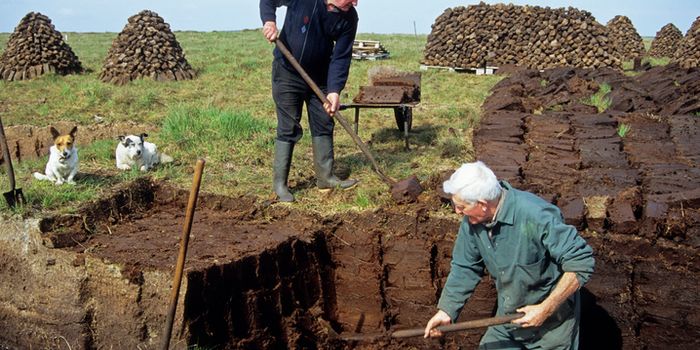Bogger strength. You either have it or you don’t.
At rural GAA clubs across the country, there is little that players love more than coming up against a team full of townies. The perceived softness that comes with urban or suburban living is a natural motivator for those who perceive themselves as more hardy.
As a born-and-bred Dub myself, I can vouch that even soccer players down at the work five-a-side know that they can expect something different from the lads from Kerry or Mayo with a GAA background. They might not be as refined in their approach, but they’ll always be hard to catch and damn near impossible to shrug off the ball.
But is it all in our heads? Not a chance. This is bogger strength.
What is bogger strength? Where does it come from? It might be tempting to think that there’s simply some God-given providence that endows the more agricultural amongst us with Herculean strength. But that’s not the case. It all comes from hard work. The kind of hard work that Dubs and townies are generally spared.
Cutting turf. Carrying a sheep on your back from some reason. Shovelling manure.
There’s a reason that there’s an exercise called the farmer’s walk. And the reason it’s called that is because it’s shit a farmer does on a day to day basis. And it’s fucking hard. That’s not their work-out. That’s their job.
Clip via Buff Dudes
There is a clear logic to the idea that using your body to transport heavy cargo from one spot to the next, over and over, lends itself to playing a sport where much of your job is to shield a ball as tackles come in from all angles.
Going to the gym three or four times a week is one thing — but living your life in a way that demands more of your body is another. So how can you really expect to compete if you’re working in accounts? Or as a teacher? Or a digital journalist.
A farmer’s job, and by extension the farm workout, is based on medium loads over a long period. Stamina. Endurance. Hypertrophic workouts (like a bench press) don’t cut it for these lads.
This contrasts with the gym culture that’s more popular in cities, where young men test themselves against one another — also trying to beat their personal bests, increase their maxes and generally try to impress their Instagram followers.
The Physical Condition Encyclopaedia by John Jesse, written in 1974, notes: “In accepting the concept of progressive resistance training with weights, the coaching profession in the English-speaking countries, particularly America and Canada, were faced with cultural problems.
“With machines doing most of the work, the majority of young men entering athletics were not drawn from a background of labor work in the mines, on the farms, in the forests or on the docks. With increasing affluence, urbanization and mechanization, children were losing the philosophy of hard work and patience to attain a goal.”
In Ireland, this kind of physical conditioning is largely unique to rural areas.
What are the key differences between gym strength and bogger strength? Bogger strength has little aesthetic application. None of this is for the gram, it’s for the graft. Bogger strength comes from a much higher degree of repetition than gym strength. Bogger strength is less results-focused and more focused on the sheer hardness of the work.
Of course, the discussion of bogger strength raises a secondary question. That is to say: what is a bogger? What constitutes a bogger? Who is a bogger? Can anybody be a bogger?
Can it be decided by parish? Does a bogger necessarily have to grow up on a farm, or have done a requisite amount of farm work? Not necessarily.
All that’s really required to possess bogger strength is to have grown up in an atmosphere that’s more physically demanding than anything that really exists in Ireland’s more metropolitan areas.
A life where physical exertion isn’t just a hobby to be pursued as part of your daily routine — but the whole routine.
That, and a sufficiently thick accent.
LISTEN: You Must Be Jokin’ with Aideen McQueen – Faith healers, Coolock craic and Gigging as Gaeilge





















































